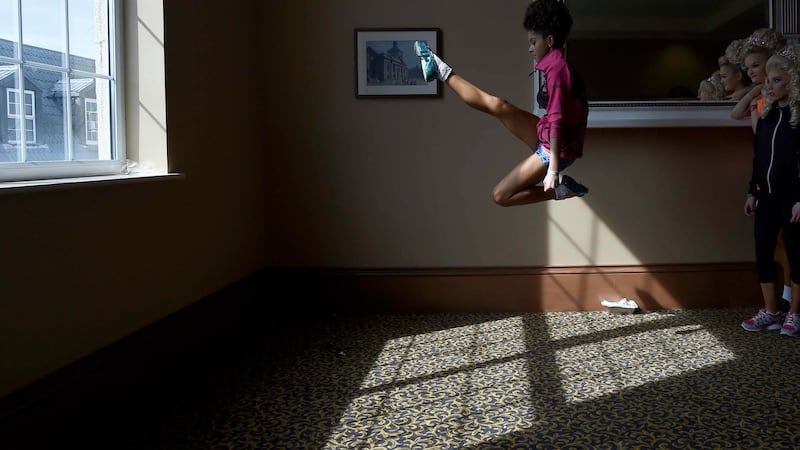The audience gasps, a whistle sounds, the music stops.
A dancer has slipped and fallen, but she bounces back up on her feet, moves off stage and the competition continues. In just a few minutes, she will have a second chance to perform her solo in front of the seven judges at the World Irish Dancing Championships.
Outside the three competition rooms, dancers stretch and practise their routines, parents pin curls and apply make-up, and vendors sell wigs, tiaras, crystal-encrusted costumes and glue that keeps socks perfectly taut over tanned calves.

This is the “Olympics of Irish dance” and, for eight days, elite dancers from more than 20 countries are competing in solo and group categories at the Citywest Hotel in Dublin. The event, now in its 47th year, is expected to attract 25,000 spectators.
“It’s a very big deal because this is my first year qualifying, so I’ve never been in this kind of situation before,” says 16-year-old Cian Cullen from New Jersey, one of the 5,000 competitors. “I’m feeling good. I’m feeling excited. The nerves haven’t gotten to me yet.”
Manly style
Cullen, who has been dancing for five years, practises three to four hours a night, four or five nights a week.
He explains that boys do not do slip jigs like the girls. “We do reels because it’s more upbeat and fast with the music, so you have to move sharp and quick, and it’s more of a ‘manly’ kind of style.”
Maggie Morbey (13), from Birmingham, has a similarly rigorous training schedule. “Say if you want to go out with your friends, you can’t because you have dance class, but I don’t mind.”
She explains that the elaborate, colourful costumes worn by female dancers are meant to attract attention. “If you don’t have as good a dress, [the judges] won’t look at you straight away, you’re not as eye-catching as someone else, so you need to make sure you have a good dress.”
“The kids love the bling,” says Josephine Brennan King, standing behind her vendors stall. “Sparkly socks are very important.”
King started dancing competitively when she was just three years old and eventually went on to perform with Lord of the Dance for seven years in the United States before setting up her own dance school and dance accessories business, iDance Irish, in Co Down.
“It’s almost like fashion,” says King. “People will wait with baited breath to see what the new designs are whenever costumes are coming out”.
‘Aggressive’ outfit
According to costume designer Keith Marron, the dress depends on the dancer. “You want a hard, aggressive look if you have a soft dancer who’s very soft on stage and their personality is a bit quiet. You want to push them out through the dress and do something a lot more ‘wow’ just to catch that attention,” he explains, standing in front of one of his own creations: a multicoloured costume covered in mirrors, glass and perspex arranged in a striking geometric pattern.
Marron, whose business Rising Star Designs is based in Belfast, says dresses start at about £650 (€770) for smaller dancers. From there, prices go up depending on size and detail. “Including crystals, you’re probably talking just under £2,000 (€2,360),” he says.
Jessica Cathcart and Lucy McCormack, both 18, spent 24 hours travelling from Adelaide in Australia, with several family members in tow, to compete in the world championships for the first time.
“We’ve just finished our solo for our first two rounds. Hopefully we get recalled for another one,” Cathcart shrugs, smiling. “We’re mainly here for the fun of it,” adds McCormack.
They have been dancing for 15 and 13 years respectively.
“It’s a dream,” says Cathcart. “It took awhile to get the qualifications to come, but now that we’re here . . .”..”
McCormack cuts across her, “We’re just so excited! We’re ecstatic to be here.”





